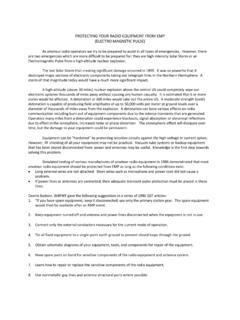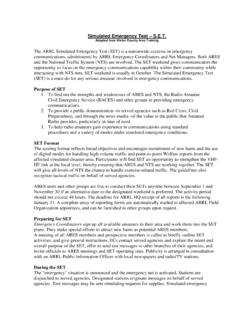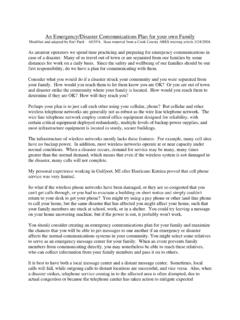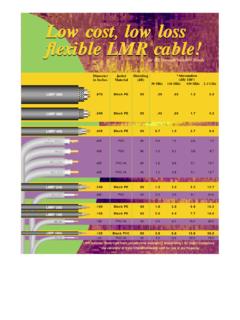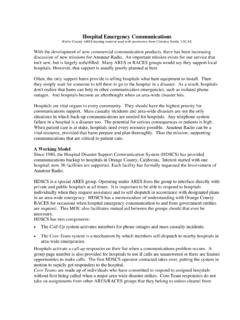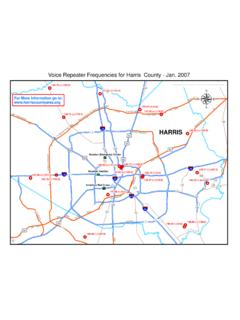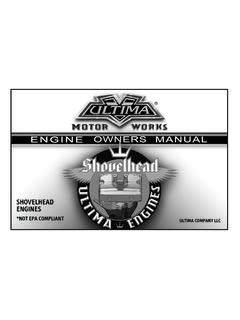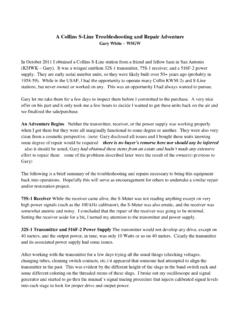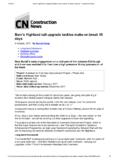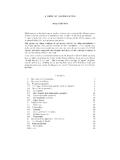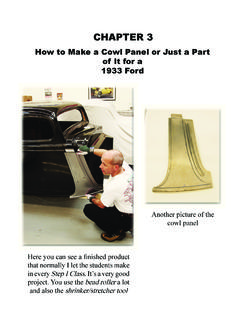Transcription of IS-26 Guide to Points of Distribution (PODs)
1 December 2008IS-26 Guide to Points of Distribution (PODs) Page 2 Table of Contents Lesson 1 INTRODUCTION .. 5 What is a Point of Distribution ? .. 6 Lesson 2 STAFFING .. 9 Organizational Structure .. 10 Roles and Responsibilities of the LEMA .. 11 POD Staff .. 13 Lesson 3 POINT OF Distribution SET UP .. 23 Developing your Site Layout .. 24 How to Activate a POD .. 33 How to Support a POD Site and Staff .. 38 Lesson 4 EQUIPMENT .. 40 Pallets .. 41 Pallet Jack .. 42 Forklift .. 44 Light Tower.
2 46 Lesson 5 OPERATIONS .. 49 How to Operate a POD .. 50 Ordering and Resupply .. 52 Maintaining Equipment .. 53 Volunteers, Media and the Public .. 53 Page 3 Lesson 6 RESOURCE ACCOUNTABILITY .. 56 Time and Resource Accounting .. 57 Staff Reporting to LEMA .. 62 Lesson 7 SAFETY .. 66 Overall Safety Procedures .. 67 How to Properly Lift Heavy Items .. 72 How and When to Use a Fire Extinguisher .. 76 How to Prevent Weather Injuries .. 79 Personal Protective Equipment (PPE) .. 83 Workplace Violence .. 87 Lesson 8 DEMOBILIZATION .. 92 Closing your Site.
3 93 Turn in Excess 93 Return Equipment .. 94 Clean and Replenish the POD Kit .. 95 Submit Paperwork .. 96 Lesson 9 ADOPT-A-POD PROGRAM .. 99 What is the Adopt-a-POD 100 Roles and Responsibilities .. 102 Concept of Operations .. 105 Lesson 10 CONCLUSION .. 111 Page 4 FEMA/USACE Guide to Points of Distribution Objectives By the end of this Guide you will be able to: Describe Points of Distribution Explain how Points of Distribution are set up and operated Understand how to supervise a Point of Distribution Staff Page 5 INTRODUCTION Lesson Objectives By the end of this lesson you will be able to.
4 Describe Points of Distribution Delineate the common forms of commodity Distribution Page 6 Points of Distribution Points of Distribution are centralized locations where the public picks up life sustaining commodities following a disaster or emergency Commodities usually include shelf stable food and water What are Points of Distribution or PODs? During a disaster, one method of issuing supplies may not be enough. A Local Emergency Management Agency (LEMA) could use other Distribution systems or use all of them at once.
5 All three complement each other and provide expanded Distribution coverage. Mobile delivery is a method that utilizes vehicles to drive into an affected area and provide commodities at different drop locations or where the need is identified. This type of Distribution is common in rural areas and where roads are damaged. Direct delivery is coordinating with a specific location, such as a shelter, feeding site, or hospital for the delivery of specific items and quantities. These commodities could be food, water, comfort kits etc.
6 Direct deliveries are usually larger in size and more specific in commodity type than what is delivered through mobile delivery. Points of Distribution are centralized Points where supplies are delivered and the public travels to the site to pick up the commodities. Page 7 For this Guide , we will focus on Points of Distribution or PODs. PODs can accommodate vehicle traffic (drive-thru), pedestrian traffic (walk thru), and mass transit traffic (bus or rail). Each person or vehicle receives a set amount of supplies. The recommended amount is for each person/vehicle to receive enough for a household of three.
7 The amount of supplies provided will differ depending on the type of transportation used. For instance, more supplies are provided to someone in a car than to a pedestrian who must hand carry items. Commodities provided can include, but are not limited to, shelf stable food, bottled water, and limited amounts of ice, tarps, and blankets. Local Emergency Management Agency (LEMA) will determine the actual commodities and set quantity of each. Page 8 Summary In this lesson you learned how to: Describe Points of Distribution Delineate the common forms of commodity Distribution Page 9 STAFFING Lesson Objectives By the end of this lesson you will be able to: Describe the organizational structure of a Point of Distribution Understand the Local Emergency Management Agency (LEMA) is the primary authority for the activation, operation, and demobilization of the PODs.
8 Identify the roles and responsibilities of: o Local Emergency Management Agencies (LEMAs) o POD staff Page 10 Organizational Structure The Local Emergency Management Agency is the primary authority for the activation, operation, and demobilization of the PODs. Local Emergency Management AgencyPoint of Distribution -1 Point of Distribution -2 Point of Distribution -3 Page 11 Role and Responsibility of the Local Emergency Management Agency The determination to activate, operate, and demobilize a POD is at the discretion of the Local Emergency Management Agency (LEMA).
9 LEMA determines the location and type of POD based on: needs analysis population density, and current methods of commodity Distribution LEMA coordinates the activation of PODs based on: public need types of resources needed infrastructure capability, and availability of resources LEMA designates resources for each POD type of distributed commodity amount of distributed commodity POD material handling equipment LEMA activates a POD. It is important not to activate without guidance from LEMA because: Workers may not be covered for workers compensation or liability LEMA may not have the resources to supply the POD LEMA may not have the capability to communicate or access the POD LEMA may decide not to utilize PODs as a form of public commodity Distribution This may cause false expectations or false hope from surrounding citizens and residents Page 12 LEMA is responsible for.
10 Providing POD Manager Training Selecting POD staff and locations Ensuring that POD locations support the population density, needs, and takes into account other forms of public commodity Distribution Registering POD workers At a minimum, POD Managers should be registered as an Emergency Worker in accordance with local laws. It is suggested that all POD primary staff are registered Activating PODs Determining the need and availability of PODs for activation Supplying PODs Providing appropriate allocations of commodities for Distribution based on population densities and expected public need Providing material handling equipment and staff support resources Demobilizing PODs Determining when to demobilize PODs based on need and infrastructure restoration Coordinating the receipt of excess resources Coordinating the removal of material handling
